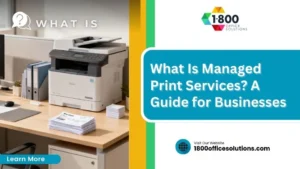What Is iPaaS? An in-Depth Guide to Integration Platform as a Service
iPaaS integration makes connecting applications and data sources more efficient, especially in complex multicloud environments. Many organizations still rely on traditional servers, which can create bottlenecks and slow down operations. This guide explores key features like drag-and-drop functionality and explains how solutions like the Anypoint Platform improve user experience and streamline workflows. By addressing common implementation challenges, businesses can gain the knowledge needed to enhance their integration strategies and drive better operational efficiency.
iPaaS Defined as Integration Platform as a Service

Integration Platform as a Service (iPaaS) refers to a cloud-based solution that enables businesses to connect and manage applications and data across various environments. This platform simplifies the integration process, allowing organizations to maintain data sovereignty while accessing critical services like SAP. iPaaS acts as a control plane, facilitating the seamless flow of information between disparate systems.
Organizations leveraging iPaaS benefit from its ability to handle multiple integrations without requiring extensive on-premise infrastructure. By utilizing resources from providers like Amazon Web Services, businesses can scale their integrations while ensuring compliance with data governance policies. This flexibility is essential for maintaining control over sensitive data in an increasingly connected digital landscape.
The role of iPaaS expands beyond simple data transfers. It enables comprehensive workflows that enhance productivity and efficiency by automating processes spanning various applications and data sources. As businesses increasingly rely on real-time data from disparate systems, iPaaS becomes crucial in orchestrating these integrations effectively.
In summary, iPaaS serves as a vital component for modern enterprises seeking to navigate the complexities of integration. It not only streamlines the interaction between cloud and on-premise applications but also ensures that data sovereignty remains intact. This capability allows organizations to focus on their core operations while relying on robust integration solutions to manage their digital ecosystems.
Key Features and Capabilities of iPaaS

Automated workflows and process integration are fundamental features of iPaaS, facilitating seamless service integration across various applications. Scalability and flexibility address enterprise needs, empowering businesses to adapt to changing demands effectively. Additionally, robust security measures, including audit capabilities and managed file transfer protocols, enhance data protection, ensuring a secure digital environment. These elements play a crucial role in optimizing operational efficiency.
Automated Workflows and Process Integration
Automated workflows and process integration serve as essential components of an integration platform as a service (iPaaS). This functionality allows organizations to streamline operations, enabling seamless provisioning of services across various applications, such as Salesforce. By utilizing iPaaS, businesses can automate repetitive tasks, reducing manual effort and minimizing the risk of errors during data exchange.
The scalability offered by iPaaS ensures that as a company grows or evolves, its integration solutions can adapt accordingly. With an integration platform, businesses can efficiently connect multiple data sources, facilitating the orchestration of workflows that span different departments and systems. This capability results in increased productivity and allows teams to focus on strategic initiatives rather than getting bogged down by operational inefficiencies.
Scalability and Flexibility for Enterprise Needs
Scalability and flexibility are critical factors in the effectiveness of an integration platform as a service (iPaaS). With solutions like Mulesoft and Informatica, businesses can easily adjust their integration services in response to evolving needs. These platforms allow organizations to connect new applications and data sources without significant delays, ensuring that their integration infrastructure remains agile and ready to support future growth.
Moreover, the governance capabilities offered by iPaaS solutions, including SnapLogic, enhance operational reliability while maintaining data integrity. Companies can implement robust policies to manage the flow of information across various departments, ensuring compliance and security. This adaptability is particularly beneficial for enterprises navigating rapid technological changes, enabling them to optimize their processes and resources effectively.
Security Measures in iPaaS Solutions
Security measures in iPaaS solutions are critical for protecting sensitive data as organizations utilize a cloud integration platform to manage their integrations. These platforms often incorporate robust encryption protocols for data in transit and at rest, ensuring that information, such as JSON files exchanged between applications like ServiceNow and Amazon S3, remains secure. Implementing access controls and authentication mechanisms within these tools further strengthens security, safeguarding against unauthorized access.
Moreover, many iPaaS providers adhere to industry standards and regulations, offering comprehensive security audits and compliance features. This commitment to security enables businesses to navigate the complexities of data governance while integrating diverse applications smoothly. For instance, organizations can confidently use iPaaS to connect various services while knowing that built-in security measures actively protect their data throughout the integration process.
Understanding the Benefits of iPaaS

Organizations utilizing iPaaS experience enhanced collaboration among applications, significantly reducing complexity in managing integrations. The software offers substantial time and cost efficiency, allowing businesses to optimize workflows and utilize APIs effectively. Additionally, iPaaS supports hybrid environments, enabling organizations to connect on-premise and cloud solutions seamlessly. These capabilities will be explored in detail in the following sections.
Enhanced Collaboration Among Applications
Enhanced collaboration among applications is a key advantage of iPaaS, as it facilitates orchestration between disparate systems to improve overall workflows. With iPaaS, organizations can integrate various resources seamlessly, allowing for real-time data sharing and cooperation among applications. This interconnectedness provides greater visibility into operations, enabling teams to experience more efficient processes and reducing the complexities often associated with managing multiple tools.
Moreover, iPaaS empowers businesses to optimize their existing technologies by connecting their cloud and on-premise solutions, thereby enhancing collaboration across departments. For teams seeking to streamline operations or improve response times, iPaaS solutions offer the ability to customize workflows and automate repetitive tasks. Organizations interested in witnessing these benefits can easily book a demo to explore how iPaaS can transform their integration strategies and drive productivity to new heights.
Time and Cost Efficiency for Businesses
Integrating an iPaaS solution allows businesses to significantly reduce both time and costs associated with managing data exchanges. With built-in authentication mechanisms, organizations can streamline security protocols, ensuring that vital information is readily accessible without introducing latency delays. This efficiency enables teams to focus on customer success by leveraging accurate data for informed decision-making, ultimately enhancing business intelligence capabilities.
Moreover, iPaaS solutions simplify workflows and operational processes, allowing businesses to automate routine tasks that would otherwise consume valuable resources. As these platforms facilitate seamless connection between various applications, they improve accessibility, making it easier for teams to collaborate and share information swiftly. By optimizing integration efforts, organizations can experience notable reductions in operational costs, empowering them to allocate resources to more strategic initiatives that drive growth.
Support for Hybrid Environments
iPaaS provides robust support for hybrid environments by facilitating seamless integration between on-premise systems and cloud applications. This ability allows organizations to maintain critical data sharing while leveraging cloud technologies, such as Cloud Foundry. With iPaaS, businesses can enhance their workflows and ensure that customer data is securely managed across various platforms without sacrificing accessibility or performance.
Moreover, iPaaS solutions often incorporate advanced encryption techniques to protect sensitive information during data exchanges. As businesses navigate the complexities of hybrid infrastructures, the integration platform ensures that workflows remain efficient, enabling teams to focus on delivering exceptional customer experiences. This streamlined approach to integration not only simplifies management but also aligns with the growing demand for flexible, secure solutions in an increasingly dynamic digital landscape.
Common Challenges Faced With iPaaS Implementation

Data migration difficulties can arise during the implementation of iPaaS, complicating the transition to a new integration framework. The management of integration complexity further challenges organizations as they seek to connect multiple applications and services. Additionally, vendor dependency concerns can limit flexibility and adaptability. These topics highlight common issues that enterprises encounter when integrating cloud services into their operations.
Data Migration Difficulties
Data migration difficulties often present significant challenges during the implementation of Integration Platform as a Service (iPaaS). As businesses attempt to move data from legacy systems into a new infrastructure, they may encounter obstacles related to data integrity and compatibility. Ensuring a secure and efficient pipeline for transferring customer relationship management data is essential to minimize risk and maintain reliable operations throughout the migration process.
The success of iPaaS adoption heavily relies on addressing these migration challenges effectively. Organizations must foster a strong community of stakeholders, including IT and data management teams, to develop a comprehensive strategy. This collaboration can streamline the transition, ensuring that all necessary data is accounted for and correctly integrated, ultimately enhancing the overall functionality of iPaaS in supporting organizational goals.
Management of Integration Complexity
Managing integration complexity stands out as a primary challenge when implementing iPaaS solutions. Organizations often grapple with the need to connect diverse applications, such as IBM software tools and data warehouses, while ensuring seamless data transformation. This complexity increases with the inclusion of emerging technologies like the Internet of Things, which can introduce additional data sources and integration points that must be navigated carefully.
To effectively tackle these integration challenges, businesses must adopt a strategic approach that encompasses a thorough analysis of their existing infrastructure, including pricing considerations for iPaaS solutions. By understanding the specific requirements and potential bottlenecks within their current ecosystems, organizations can design a customized integration strategy that simplifies connectivity and enhances overall operational efficiency.
Vendor Dependency Concerns
Vendor dependency concerns arise when businesses rely heavily on a specific iPaaS provider for data integration and management of their enterprise software solutions. This reliance can lead to potential risks, such as limited flexibility in adopting new technologies and difficulties in data exchange should the provider alter their offerings or pricing structure. Organizations may find themselves constrained by the capabilities of the chosen platform, particularly if it lacks essential features that support changing business needs.
Moreover, enterprises using platforms like the Google Cloud Platform for their iPaaS solutions may face challenges if they become too intertwined with the vendor’s ecosystem. Such integration can create barriers when trying to connect with other systems or switching to alternative solutions in the future. Understanding these vendor dependency implications is vital for businesses as they develop their integration strategies, ensuring they maintain a balance between leveraging powerful capabilities and safeguarding against unforeseen limitations on their operations.
Practical Use Cases for iPaaS in Organizations

iPaaS plays a crucial role in streamlining data management and sharing, facilitating seamless integration between enterprise resource planning systems and diverse applications. It also supports the merging of cloud and on-premises systems, enhancing data integrity and security. Furthermore, automation of business processes across platforms allows organizations to improve efficiency and responsiveness in an increasingly digital environment. The following sections will detail practical applications of these features, emphasizing their importance in contemporary business operations.
Streamlining Data Management and Sharing
Streamlining data management and sharing is a critical function of iPaaS, enabling organizations to connect various systems and data sources effectively. By integrating platforms like webmethods, businesses can enhance their DevOps processes, ensuring timely access to information across supply chain operations. This approach reduces delays and fosters collaboration, ultimately improving operational efficiency and decision-making capabilities.
Moreover, iPaaS facilitates the seamless exchange of data through APIs, allowing companies to connect chatbots and other applications seamlessly. This capability not only accelerates response times but also enriches customer interactions by providing real-time information. As a result, organizations can improve their service delivery while maintaining robust data governance practices aimed at protecting sensitive information during integration.
Integrating Cloud and on-Premises Systems
Integrating cloud and on-premises systems is a critical function of iPaaS, enabling organizations to facilitate seamless application integration across diverse environments. For instance, a business leveraging the Google App Engine can effectively manage data migration between its cloud applications and on-premises databases, ensuring that all data remains synchronized and accessible. This integration enhances operational efficiency and allows for real-time updates, which are vital for supporting various business processes.
Moreover, iPaaS supports enterprise integration by providing a unified platform for handling data exchanges efficiently. Companies can connect legacy systems with modern cloud solutions, ensuring that vital business processes operate smoothly without interruptions. This capability not only simplifies data management but also empowers organizations to respond more effectively to changing market demands, leading to improved overall performance and customer satisfaction.
Automating Business Processes Across Platforms
Automating business processes across platforms through iPaaS significantly enhances efficiency within organizations. By integrating systems like marketing automation tools and customer relationship management (CRM) software, businesses can streamline data flows and ensure that information is consistently updated across various applications. This level of enterprise application integration not only reduces manual entry errors but also facilitates better data governance, ultimately leading to an improved customer experience as teams respond faster to client needs.
For example, a retail company can leverage iPaaS to connect its e-commerce platform with its inventory management system. This integration allows for real-time updates on stock levels and order transport, enabling the firm to adapt swiftly to changing market demands. Such automation eliminates potential bottlenecks in operations, making it easier for organizations to provide seamless services while enhancing overall productivity and resource management.
Comparing iPaaS With Other Integration Solutions

Understanding the distinctions between Integration Platform as a Service (iPaaS) and other integration solutions is fundamental for organizations. This section will explore the differences between iPaaS and traditional middleware, as well as compare iPaaS with API Management solutions. Additionally, the relationship of iPaaS to Software as a Service (SaaS) and Platform as a Service (PaaS) models will be examined, highlighting common ground in areas such as master data management and analytics.
This analysis aims to provide practical insights into how iPaaS leverages open data protocols and electronic data interchange to streamline integration design, enhancing operational efficiency in modern business environments.
Differences Between iPaaS and Middleware
Integration Platform as a Service (iPaaS) differs significantly from traditional middleware solutions by embracing a cloud-centric approach that enhances flexibility and scalability. Unlike middleware, which typically serves as a static bridge between applications, iPaaS provides a dynamic environment for integrating diverse application software, allowing organizations to automate workflows easily. This capability is vital for enterprises looking to leverage robotic process automation and manage shadow IT effectively, as it simplifies the connection across various applications and services.
Furthermore, iPaaS solutions enable organizations to utilize advanced analytics tools, like Qlik, in conjunction with other enterprise systems seamlessly. This integration fosters improved data visibility and insights, helping businesses optimize their operations. By employing an automation platform, companies can streamline their processes without experiencing the complexities often associated with conventional middleware, thereby ensuring a smoother transition to modern integration practices.
iPaaS vs. API Management Solutions
iPaaS and API management solutions are both essential for modern businesses seeking seamless integration capabilities, yet they serve different purposes. While iPaaS focuses on connecting various cloud and on-premises systems, enabling hybrid environments for efficient data flow, API management solutions specialize in overseeing API creation, usage, and maintenance. For organizations operating within budget constraints, understanding the distinct roles of each solution will aid in selecting the right approach to enhance operational efficiency and optimize resource utilization.
By utilizing platforms like AWS for iPaaS solutions, businesses can experience enhanced interoperability and quick adaptability across different software as a service (SaaS) applications. Learning how to leverage these technologies simultaneously can lead to more streamlined workflows and improved data governance. Ultimately, organizations should assess their integration needs carefully, determining whether a comprehensive iPaaS strategy or a focused API management approach is best suited to their operational requirements.
How iPaaS Relates to SaaS and PaaS Models
Integration Platform as a Service (iPaaS) plays a significant role in the cloud computing ecosystem, particularly in relation to Software as a Service (SaaS) and Platform as a Service (PaaS). iPaaS serves as a critical intermediary that facilitates cloud data integration across various SaaS applications, ensuring that clients can achieve seamless interactions between different services. This capability supports organizations undergoing digital transformation by enabling quick and efficient connections between mobile apps and backend systems, leading to enhanced operational processes.
Moreover, iPaaS and PaaS share a complementary relationship, as both models focus on enabling innovation and streamlined development. While PaaS provides the necessary infrastructure and tools for developers to build applications, iPaaS empowers businesses to integrate these applications effortlessly with existing systems. By leveraging iPaaS, organizations enhance their ability to manage and synchronize data across multiple applications, thus supporting a unified experience for users and promoting efficient workflows that are vital in today’s digital-first environment.
Future Trends in iPaaS Development

The role of AI and machine learning in iPaaS is increasingly vital, enhancing the capability of cloud solutions to adapt to dynamic business requirements. Innovations in prebuilt connectors and APIs streamline integration processes, allowing companies to rapidly deploy complex architectures with minimal effort. Predictions indicate robust growth in the iPaaS market, emphasizing its significance in enterprise-level business logic and communication via HTTP protocols.
The Role of AI and Machine Learning in iPaaS
The integration of artificial intelligence (AI) and machine learning into Integration Platform as a Service (iPaaS) represents a significant investment in innovation within the digital landscape. These technologies enhance interoperability between various applications by enabling systems to learn from data and improve their processes over time. This capability results in more efficient data management, ultimately leading to improved customer service as organizations can swiftly adapt to changing demands and provide timely solutions.
As businesses strive to remain competitive, the role of AI and machine learning within iPaaS becomes increasingly crucial. These tools allow for advanced analytics that help in optimizing workflows, reducing manual intervention, and minimizing errors during data exchanges. For companies focused on improving operational efficiency, leveraging such technologies equips them with the means to enhance their integration strategies, ensuring seamless connections between diverse systems while responding to customer needs effectively.
Advancements in Prebuilt Connectors and APIs
Advancements in prebuilt connectors and APIs significantly enhance the functionality of Integration Platform as a Service (iPaaS) solutions, enabling businesses to streamline their sales and marketing processes. These connectors facilitate the easy integration of various software applications, allowing organizations to automate onboarding processes and improve data flow between systems. By leveraging artificial intelligence, companies can optimize these connections to analyze customer interactions and tailor their strategies according to real-time data insights.
The ability to connect computer systems through robust APIs simplifies complex integration scenarios, making it easier for teams to collaborate and share vital information. For instance, marketing teams can synchronize their activities with sales platforms, ensuring that leads are effectively tracked and managed. As organizations continue to rely on digital tools, enhanced prebuilt connectors will be critical in maximizing efficiency and driving better outcomes across departments.
Predictions for iPaaS Market Growth and Adoption
The iPaaS market is anticipated to experience significant growth as organizations increasingly recognize the importance of integrating diverse systems to enhance operational efficiency. With the advancement of machine learning technologies, businesses can harness big data to analyze vast amounts of information, allowing for quicker and more informed decision-making. This trend underscores the growing need for integration solutions that not only connect systems but also optimize the processes between them.
Furthermore, as enterprises continue to migrate towards digital transformation, the adoption of iPaaS is likely to accelerate. The ability to manage complex data flows across multiple applications seamlessly presents a compelling value proposition for organizations striving to maintain a competitive edge. As iPaaS providers enhance their offerings, ensuring robust support for evolving business needs, the market’s evolution will reflect an essential shift towards integrated, data-driven operations.
Conclusion
Integration Platform as a Service (iPaaS) proves essential for modern organizations seeking to streamline data management and enhance operational efficiency. By facilitating seamless connections between diverse applications and enabling automated workflows, iPaaS empowers businesses to optimize their processes and improve collaboration. The robust security measures and scalability offered by iPaaS solutions allow companies to navigate complex integration landscapes while maintaining data integrity. Embracing iPaaS is crucial for any enterprise aiming to thrive in today’s rapidly evolving digital environment.











